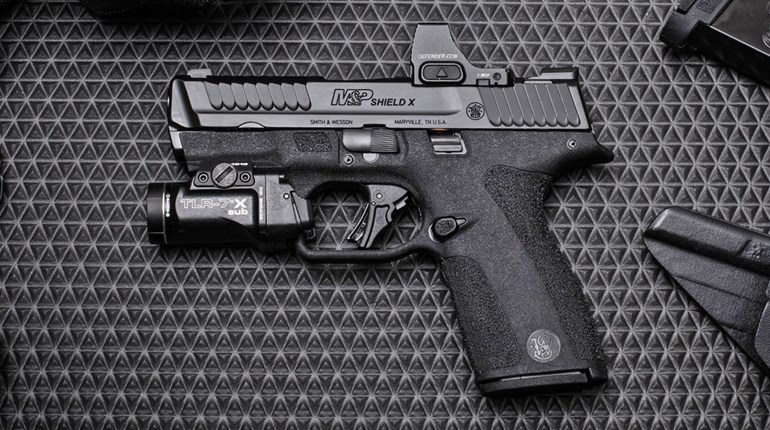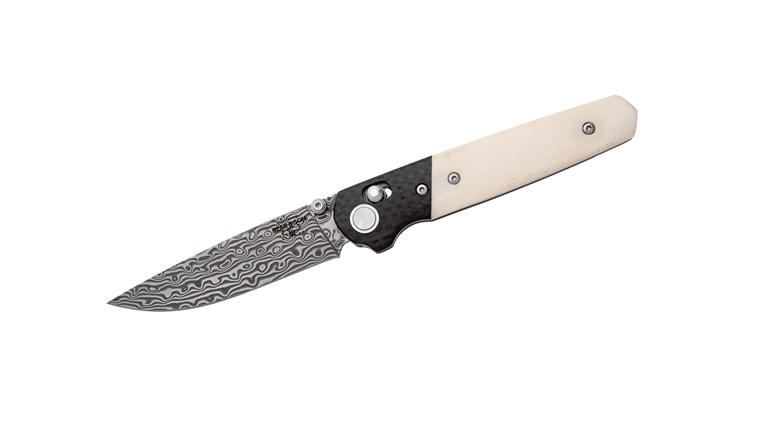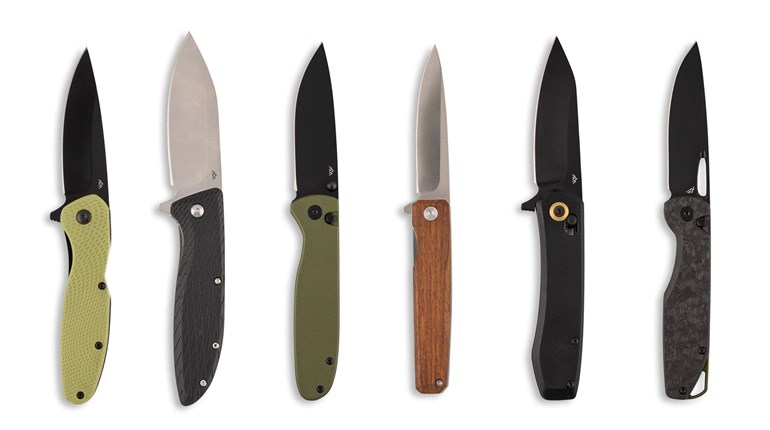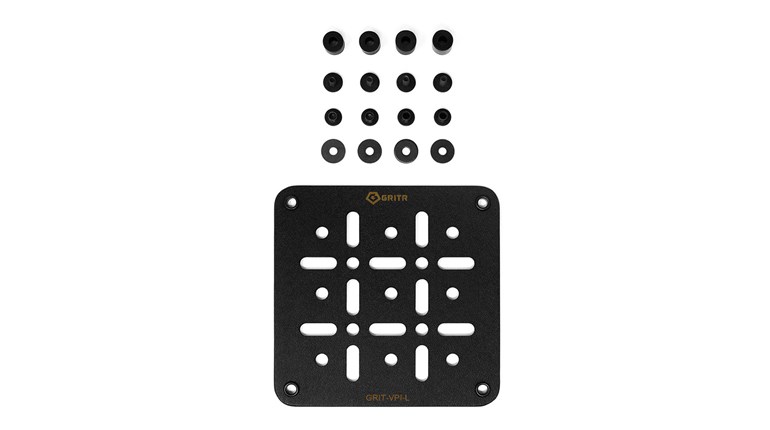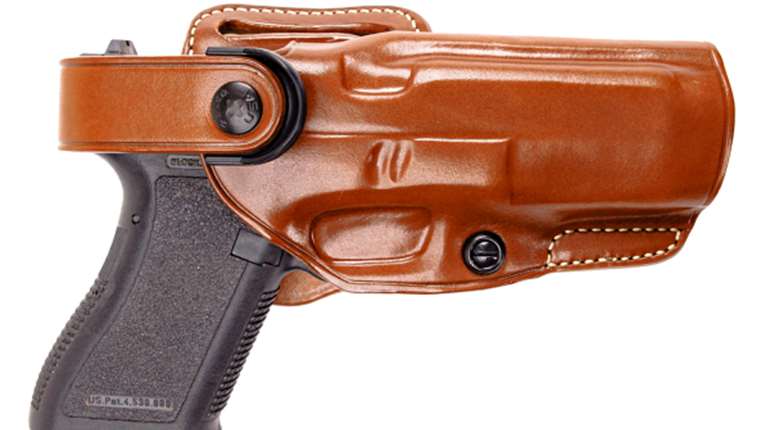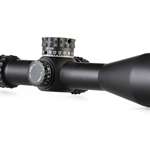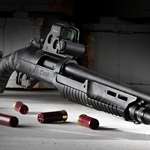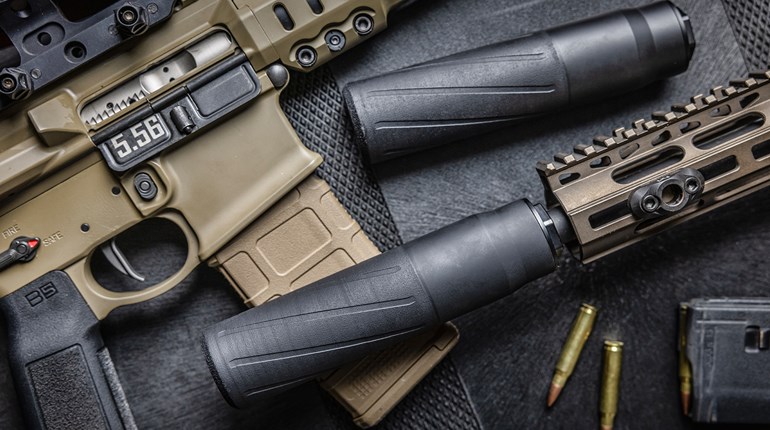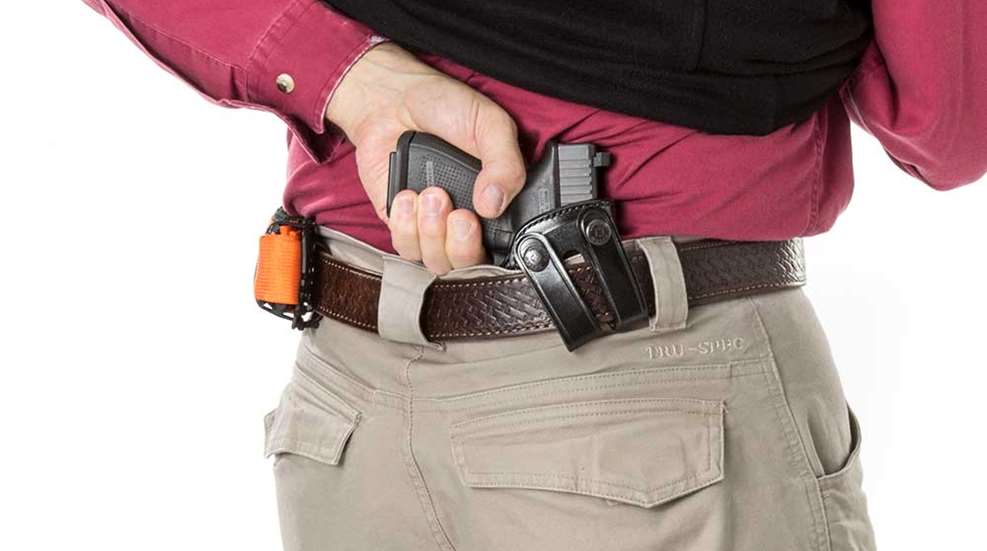
Above: if you're involved in a fight for your life, it's possible you can get injured in your strong hand. Having medical gear and a way to access your concealed-carry gun with your support hand can save your life.
When asked why you carry a firearm or any other defensive tool as one of your everyday carry (EDC) items; common answers may include “I’m responsible for my own personal safety” or “The police can’t get here fast enough.” Responsible, legal firearms owners take their lives and their life-saving tools seriously. So then, why not continue with that mindset and make medical equipment part of your EDC loadout? Statistically, you have a greater chance of dealing with a medical emergency than you do a violent attack. I carry a firearm on a daily basis, along with lifesaving medical gear. My friend and mentor, John Hearne, a Rangemaster Staff Instructor once said, “It’s not the odds, it’s the stakes!”
While he was referring to various self-defense skills; it does hold the same truth regarding being prepared for traumatic medical emergencies. Personally, I hold both my medical and defensive tools and training on both subjects at the same level of importance. One of the first and most important factors in your decision on medical devices or equipment should be reliability. In medicine, science and factual data are used to decide treatments for patients.
Evidenced-based medicine reigns supreme when it comes to saving lives. Theories or anecdotal opinions are not intelligent units of measure to determine whether or not a medical device works or not. Nor are they a strong basis to determine which device you should carry in order to save lives. The following are suggestions and options that fit my own specific needs that I’m sharing with readers to give you some ideas for carrying medical gear on a daily basis. You’ll have to make your own decisions on what items and methods of carry work best for your own specific needs. You’ll need to think of your medical gear similar to the way you think of your defensive firearm; there are levels of tools to coincide with levels of threats. Medical emergencies should be viewed in a similar way.
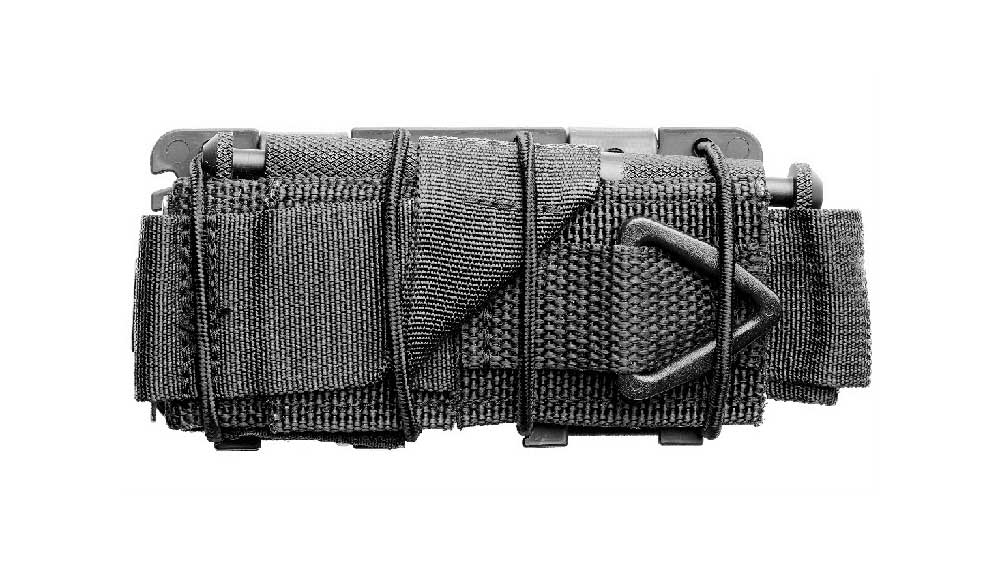
The PHLster Flatpack Tourniquet Carrier is perhaps one of the simplest, yet innovative minimalistic methods of carry for a proven and effective life-saving tourniquet (TQ) such as the Special Operations Forces Tactical Tourniquet – Wide (SOFTT-Wide), from Tactical Medical Solutions. When you flat-fold a SOFTT-Wide and secure it on your belt via the Flatpack TQ Carrier; you’ll hardly know it’s even there. For on-body carry, I run it right up front, just to the left of my spare pistol mag. My cover shirts conceal the Flatpack nicely without printing and still allows for rapid one-handed deployment with either hand.
Some folks run it at the three or nine o’clock position on their EDC belt as an alternative location. Just make sure you can access it with either hand. (Starting to sound familiar? As in, similar to your spare pistol mag or your fixed blade? Funny how that works!) You want to talk versatility, the belt loop can be adjusted for various belt widths; which is nice if you have to throw on the suit and roll with a thinner belt. The versatility of the Flatpack TQ Carrier continues with the ability for off-body carry by purchasing the MALICE clip version and slappin’ it on your Gamut pack from Vertx, for example. The Flatpack TQ Carrier eliminates several excuses for not carrying proven life-saving equipment.
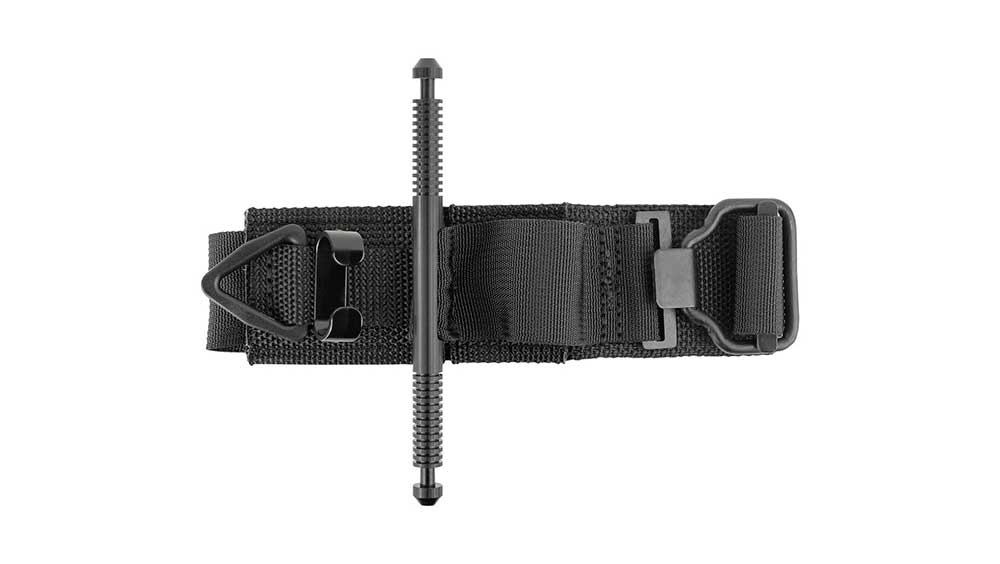
If you prefer to keep your shirts tucked in or work in a non-permissive environment where even the pocket clip on your folder puts you in the hot seat; then the Pocket Shield is just the tool for you. Created by Chris Fry of M.D.T.S. Training and manufactured by Raven Concealment Systems; this pocket protector for cool kids is an incredibly valuable device. This elegant device keeps finding its way into my pockets more than any other carry method or kit.
The only limitation as to what you can carry on it is your own imagination… and maybe the size of your pocket. I simply used the two rubber bands that came with the SOFTT-Wide to lash the tourniquet and a package of QuickClot Combat Gauze to the Pocket Shield. It doesn’t print at all, keeps items organized, and is made in the USA. This set-up fits great in the pockets of my favorite pair of Defiance jeans by Vertx or my woolen suit trousers. One-handed deployment and application is a bit tricky compared to other carry methods, but like anything else it takes a little practice.
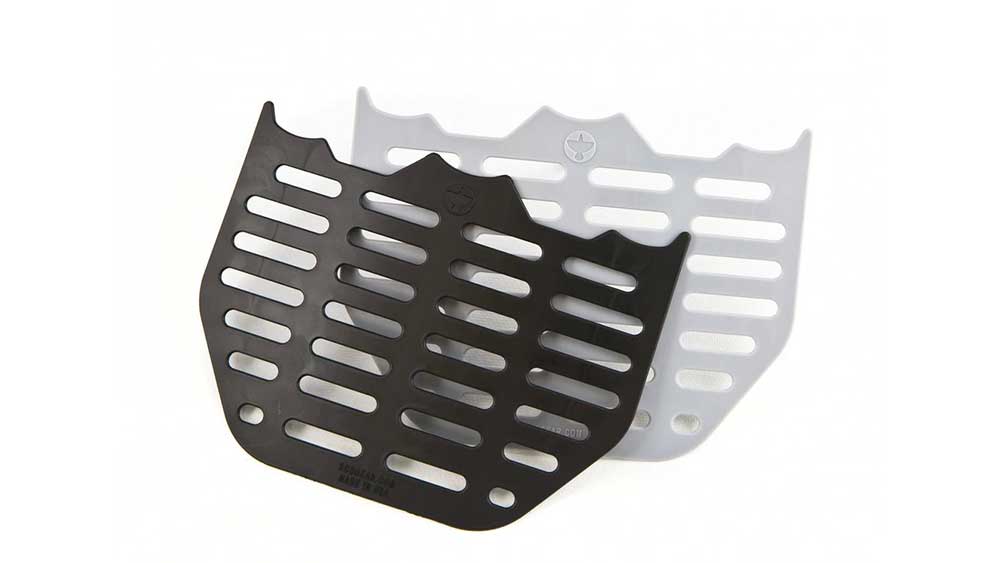
The method of carry that seems to be popular amongst those who already carry medical gear as part of their EDC is some sort of ankle rig designed specifically for medical equipment. I’ve been wearing a medical ankle rig for almost 10 years. My favorite was one from Tactical Medical Solutions, but is no longer in production. My friend, Alessandro Padovani of Safer Faster Defense is the exclusive importer for the SFD Responder medical ankle rig, made by the fine Italian tactical nylon company, FrogPro.
Ankle rigs take a pretty good beating throughout the year and I’ve been more than impressed with the SFD Responder’s design and quality. It has held up over the past few years and the new 2.0 version is just as durable. The new version has sticky silicone sewn into the pockets to keep contents even more secured and yet allow rapid deployment when needed. The rig doesn’t come with any medical contents so you can top it off with medical items that fit your needs. For me, I run a SOFTT-Wide, a packet of QuickClot Combat Gauze, an H*Vent chest seal from H&H Medical, and either the WoundStop Home Care Bandage (what I call the “mini-Israeli”) from PerSys Medical or the Compact Medical Trauma Bandage from Eleven10 Gear. That may vary according to what I’m doing that day.
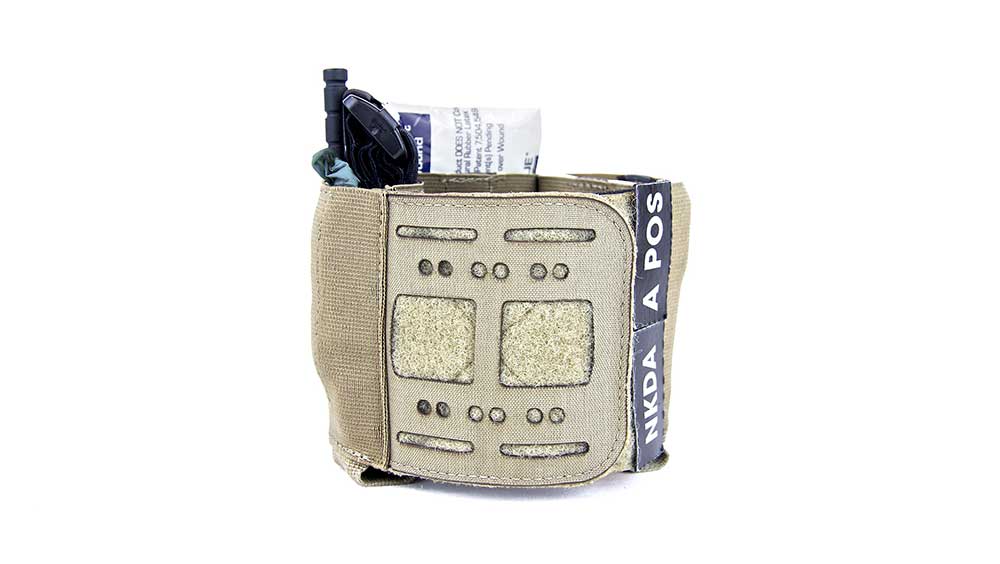
These are three carry methods for on-body carry for quality, life-saving medical items. The Flatpack TQ Carrier, the Pocket Shield, and the SFD Responder will keep your EDC medical gear secure and accessible. Your personal EDC medical loadout may be different than mine; just make sure you’ve pressure tested deploying and applying your medical gear during training. I don’t care if you host or take one of my classes; just get applicable medical training from a reputable instructor. Mindset, Education and Tools are the keys to success and principles that we advocate for at Lone Star Medics.
Gear and Training References:
Lone Star Medics
http://lonestarmedics.com/
Rangemaster Firearms Training Services
https://rangemaster.com/
PHLster Holsters and Medical Options
https://www.phlsterholsters.com/
Tactical Medical Solutions
https://www.tacmedsolutions.com/
Vertx
https://www.vertx.com/
MDTS Training
https://www.mdtstraining.com/
Raven Concealment Systems
https://rcsgear.com/
Safer Faster Defense
https://saferfasterdefense.com/
H&H Medical Products
https://buyhandh.com/
Eleven10 Gear
http://www.1110gear.com/
PerSys Medical
https://ps-med.com/
FrogPro
https://www.frogpro.it/












